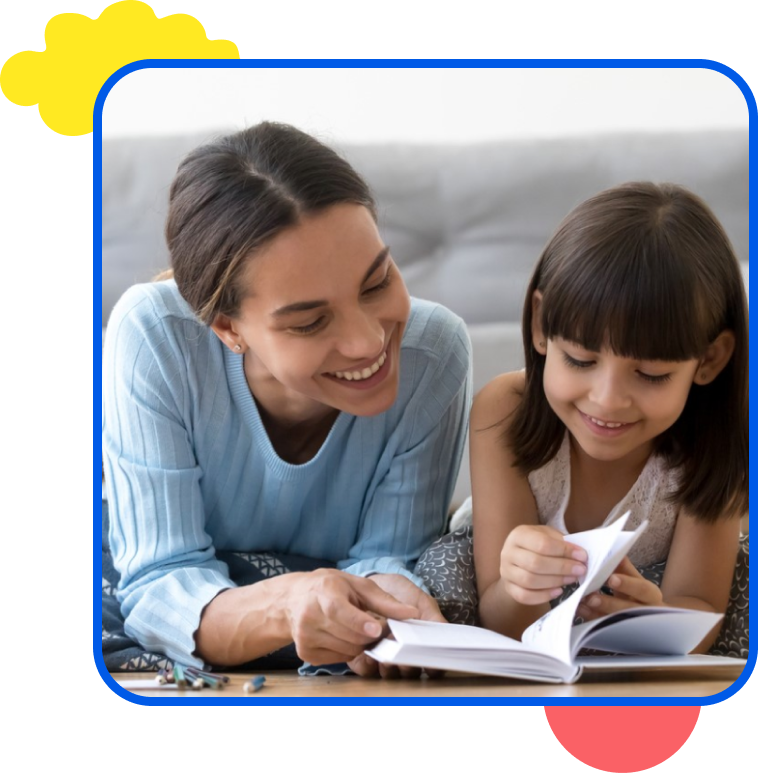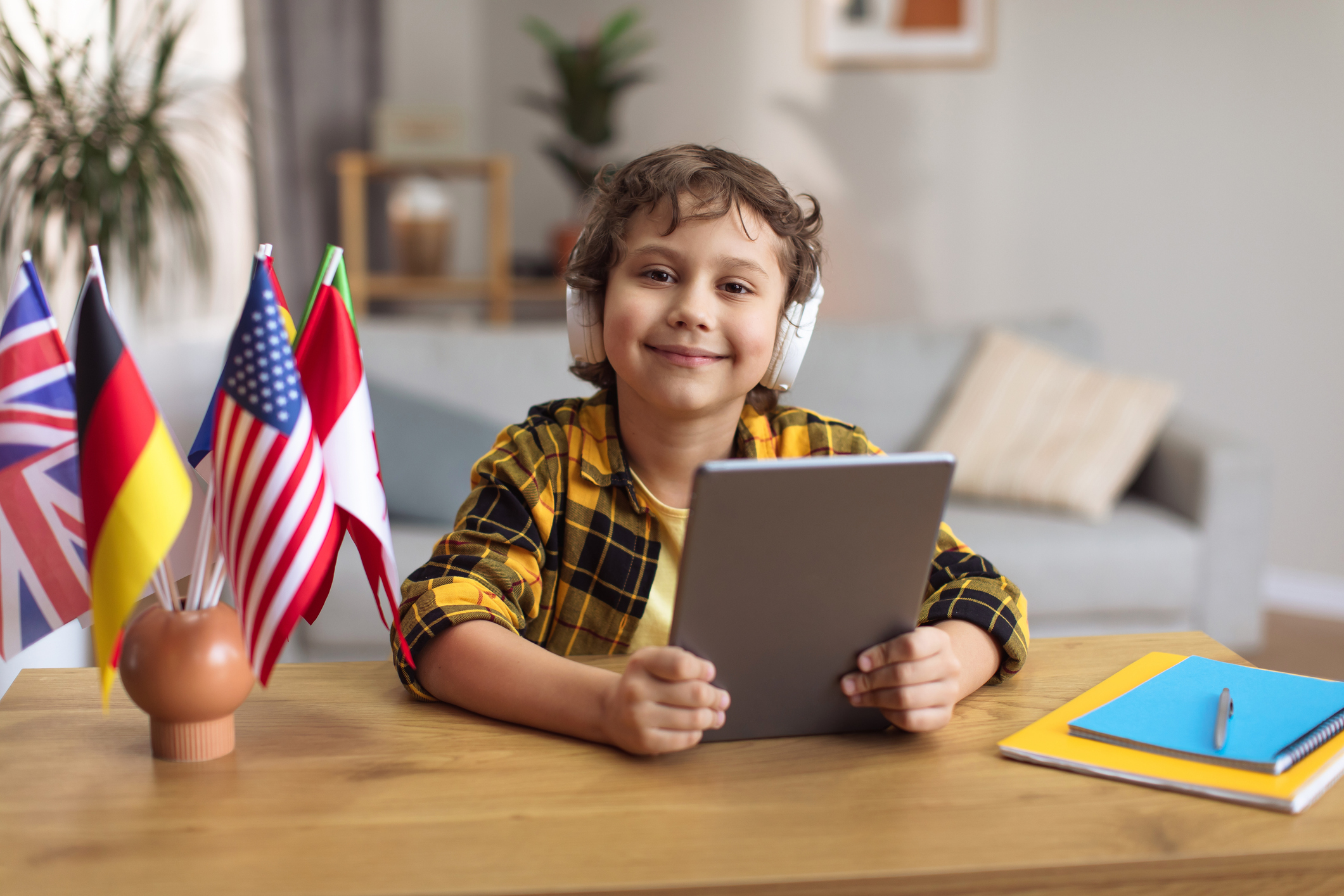8 of the Best Language Learning Apps for Kids



Parents looking for the best language learning apps for kids need look no further! In this blog post, we’re sharing a list of 8 apps that are perfect for children who want to learn popular foreign languages like French, Spanish, and Mandarin Chinese.
Just one question before we begin: are language learning apps the right approach for parents aiming to raise a bilingual child? Sometimes yes, sometimes no. It really depends on what goals you and your child have for language learning.
So, let’s start by taking a look at the pros and cons of language learning apps for kids before going through the list!
The Pros and Cons of Language Learning Apps for Kids
Here are the major pros and cons of language learning apps for you to consider.
Pros of language learning apps
- Fun and interactive. Many of the best language learning apps for kids use games and other engaging activities to teach basic vocabulary and phrases. This can make learning a new language much more enjoyable than learning from a textbook.
- Convenience and flexibility. With language learning apps, children can study whenever and wherever they want, for as long or short a time as they like.
- Free or low-cost. Compared to traditional foreign language classes, language learning apps are much cheaper and, in some cases, they’re completely free to use.
- Options and variety. Not only are there many language learning apps for kids to choose from, but there is also a wide range of languages to learn. This is great if your child is learning a language that isn’t commonly taught or studied in your area.
Cons of language learning apps
- Lack of human interaction. Most language learning apps fail to provide opportunities to learn, ask questions, AND speak the language with a native speaker of the target language.
- Hard to learn beyond the basics. While apps can provide a great introduction to the basics of a language, they’re not always the best at teaching more complicated grammar rules and vocabulary.
- Requires a lot of self-discipline. When it comes to language learning, consistency is key. And while some language learning apps send study reminders, it’s common for people (especially children) to lack the self-discipline to stick with language learning using apps alone.
- Easy to be distracted. When using an app, your child is just a few clicks away from big distractions like YouTube, video games, and much more. This can make it hard for children to focus on learning a language.
8 of the Best Language Learning Apps for Kids
Even if they’re not perfect, there are some great language learning apps! Your child can use one or more of them to learn the basics of a new language and/or to supplement what they learn in a more traditional classroom setting. Here are 8 apps you and your child can try.
#1 Babbel
Babbel is one of the best language learning apps for kids because it’s designed to make learning a new language fun and engaging. There are mini-games and other activities that help reinforce what your child is learning. The app offers instruction in languages like Spanish, French, and German. It is available on the Apple App Store and Google Play Store.
Learn more by reading our Babbel French review.
#2 Droplets
Droplets is a language learning app for kids that is focused on teaching vocabulary through visual learning. The app features short lessons (5 min or more) or games for your child to make quick progress in learning vocabulary in different categories, such as animals, food, and transportation. On this app, your child can learn languages like French, Japanese, and Mandarin Chinese. The Droplets app is available on the Apple App Store and Google Play Store.
#3 Gus on the Go
Gus on the Go is a language learning app for children that has lessons in 30 languages, including French, Spanish, German, Mandarin, and English. Each lesson contains 10 simple words that children can learn in fun, interactive, story-based game sessions. Gus on the Go is available on the Apple App Store and Google Play Store.
#4 Rosetta Stone
Rosetta Stone has existed for a long time and now offers its programs on an app for language learners. The programs offer a comprehensive language learning experience with lessons in multiple languages, including French, Spanish, and Italian. The app also includes pronunciation practice sessions, live tutoring sessions, and progress tracking tools. Rosetta Stone is available on the Apple App Store and Google Play Store.
#5 Duolingo
Duolingo aims to be the best free language app. The app offers short and effective lesson plans to learn key vocabulary, phrases, and grammar in many languages, including French, Spanish, and German. It also uses “streaks” to boost motivation.
In addition to the regular app, Duolingo for School can be downloaded for free and offers a way of tracking and checking student progress. Parents or teachers may restrict the vocabulary to a specific age. Duolingo is available on the Apple App Store and Google Play Store.
Learn more by reading our Duolingo French review.
#6 Peg and Pog
Peg and Pog is a language learning app that’s based around the story of two kids who travel the globe and learn languages along the way. As they explore new scenes in their own home, they learn vocabulary. Peg and Pog is available in English, Spanish, French, German, Italian, and Portuguese. The app is available on the Apple App Store and Google Play Store.
#7 Memrise
Memrise is an app that uses memorization techniques, like spaced-repetition learning, to help users learn vocabulary and key phrases in a foreign language. Memrise has designed courses in several languages including French, Spanish, German, Japanese, and Mandarin Chinese. Users of Memrise can also create their own courses, which can be of varied quality. Memrise is available on the Apple App Store and Google Play Store.
#8 Dinolingo
Dinolingo is a language learning app & website for kids. It is available in 50 languages with over 30,000 online activities. Dinolingo’s online portal is 100% safe and secure. No ads, no pop-ups, no chat rooms. Their dashboard allows real-time parental controls to monitor the child’s participation and progress. Dinolingo is available on the Apple App Store and you can visit them on their website.
Final Thoughts
There are some definite advantages to using language learning apps with your kids, even if they’re not perfect. There are, however, also some limitations to keep in mind — especially when it comes to young children using these apps to learn a new language.
That’s why we recommend pairing your child’s use of a language learning app with regular language classes with a native-speaking teacher. That way, they can enjoy all the pros and avoid all of the cons of learning from an app!
If you want a convenient way to start regular language classes and get the most from the apps, check out LingoCircle! We’re an online language school (for children ages 3-15) that helps children enjoy the benefits of bilingualism in early childhood. Get your child’s first lesson free by registering for a trial lesson today!


Simple Ways to Learn a Second Language at Home
Get resources and tips to help supplement your bilingual education journey at home.
By providing your email you are signing up to receive emails from Bilingual Bebe. Privacy Policy







